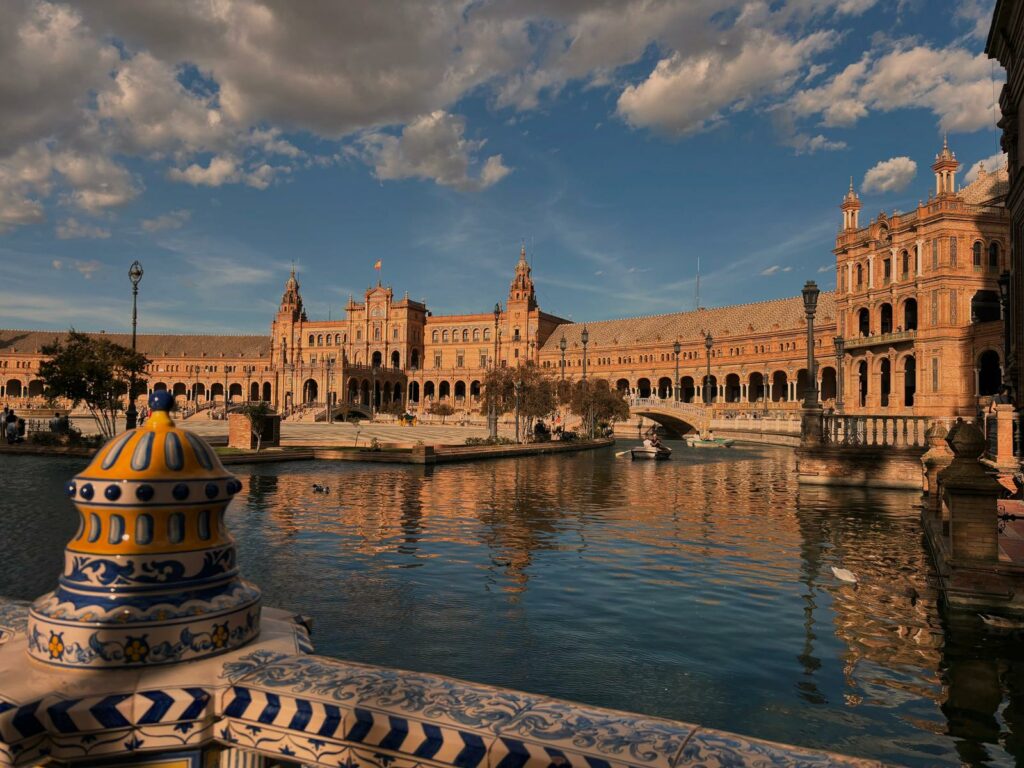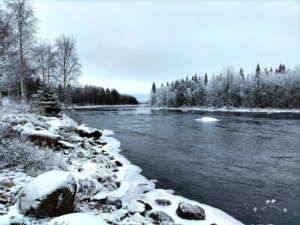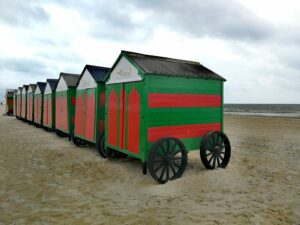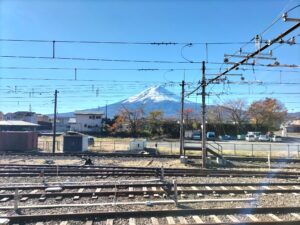Table of Contents
| You have never been to Seville if… FOOD – you haven’t tasted delicious tapas in Calle Betis! ATTRACTIONS – you didn’t attend to a Flamenco show at La Carbonería! SOUVENIRS – you didn’t buy any Sevillan craft fan! |
Introduction
Are you dreaming of wandering through narrow cobblestone streets, marveling at stunning Moorish architecture, and indulging in delicious tapas? Well, then, this article is for you! We’re so excited to tell you all about what to see in Seville, the heart of Andalusia, in just 3 days. Start planning your wonderful trip with us today!
With a conference scheduled for Ocotber in Seville, Claudia and I took the opportunity to plan a few days in the city, where flamenco was born and where millions of tourists go every year to soak in the vibrant Spanish culture and breathtaking historical sights.
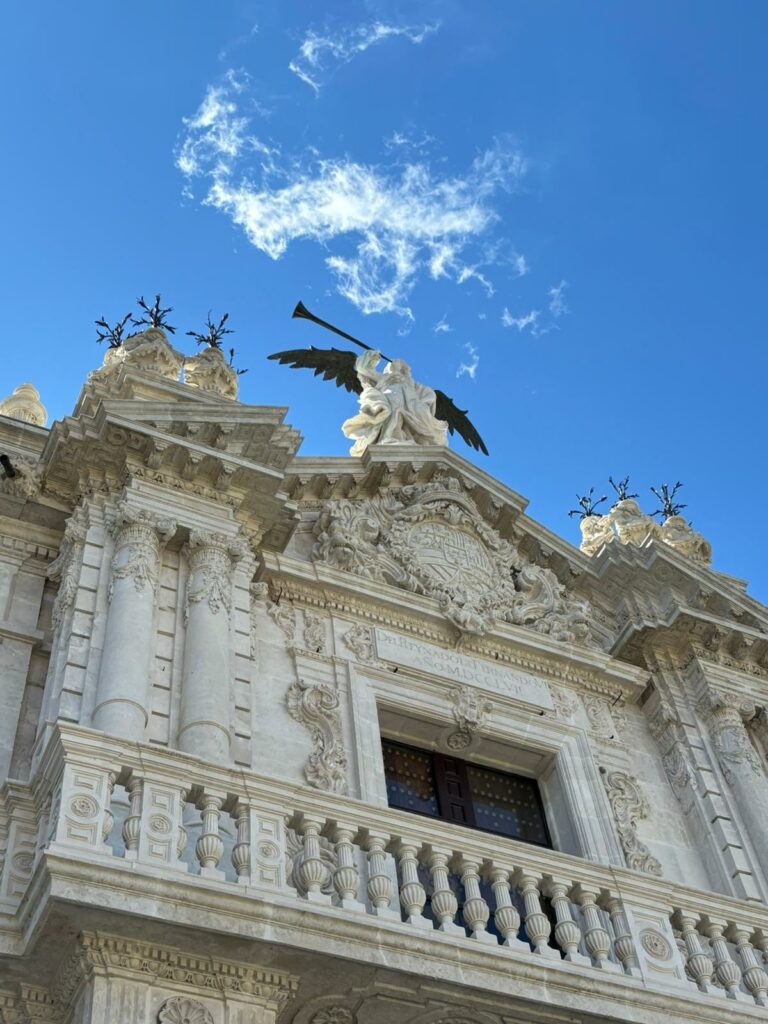
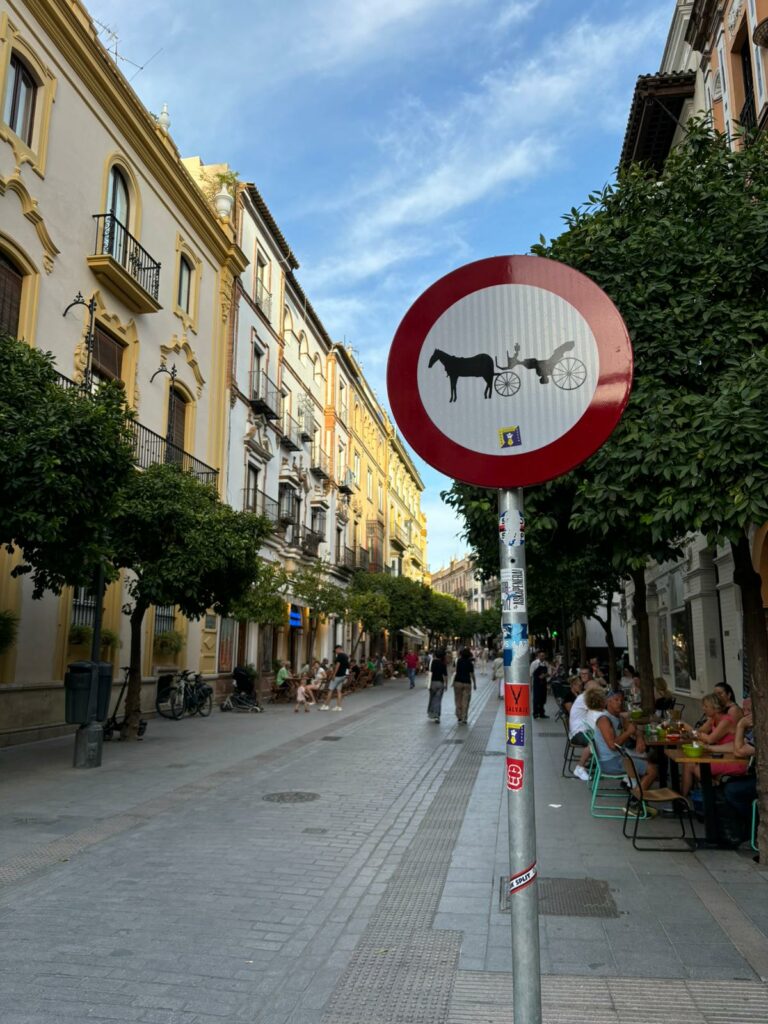
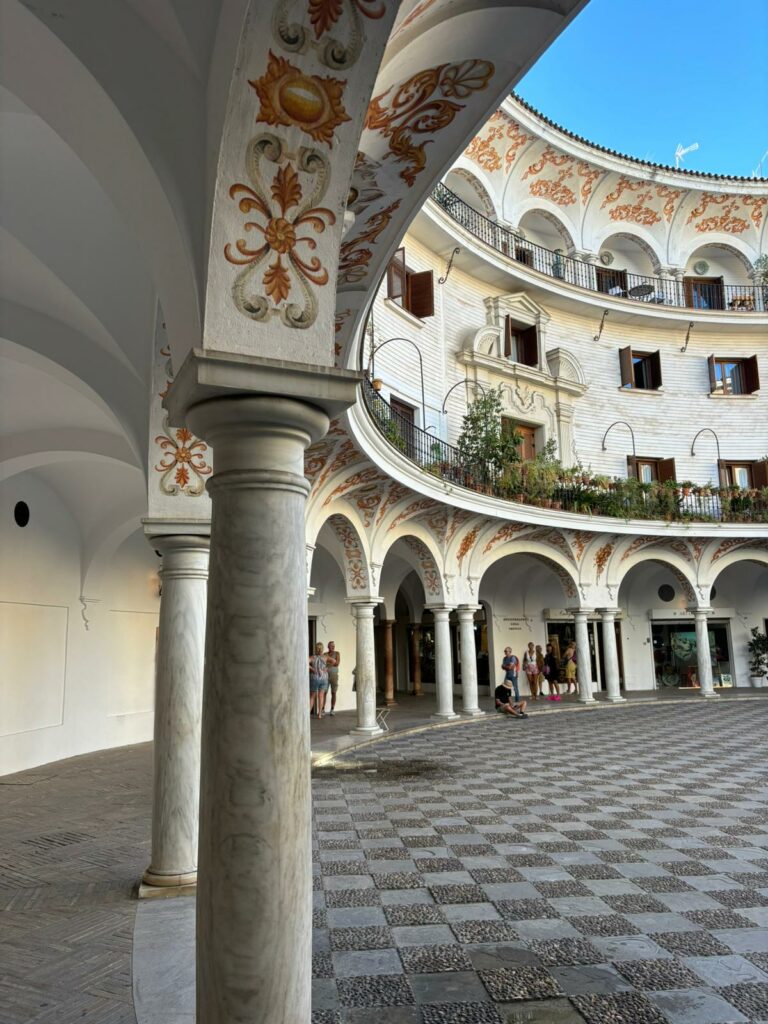
Below you will find some essential information and a handy 3-day itinerary about what to see in Seville. We’d love to hear your ideas in the comments box so we can make this itinerary as complete as possible!
3-Day Itinerary
Day 1 – Historic Center and Flamenco Show
Our adventure in Seville began in the heart of the city. We started our day early with a guided tour of the old town. You can click here to access the activity:
Then we headed straight to the Cathedral of Seville, the largest Gothic cathedral in the world and the final resting place of Christopher Columbus. We booked our tickets in advance here:
The sheer size of this architectural marvel left us speechless!
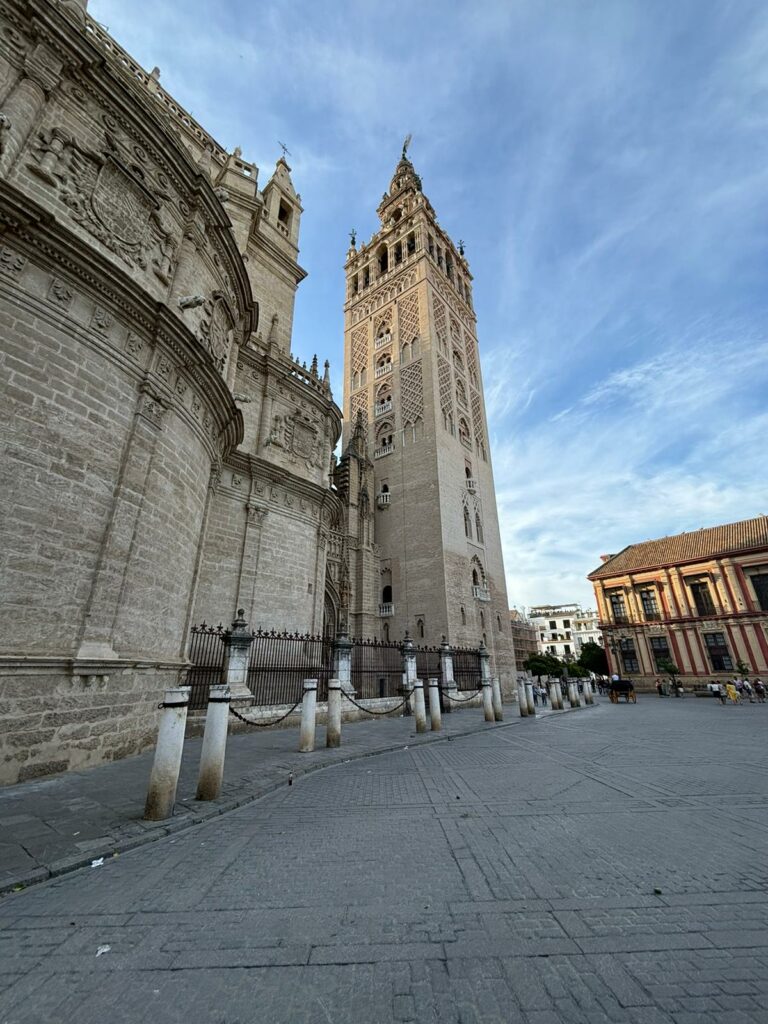
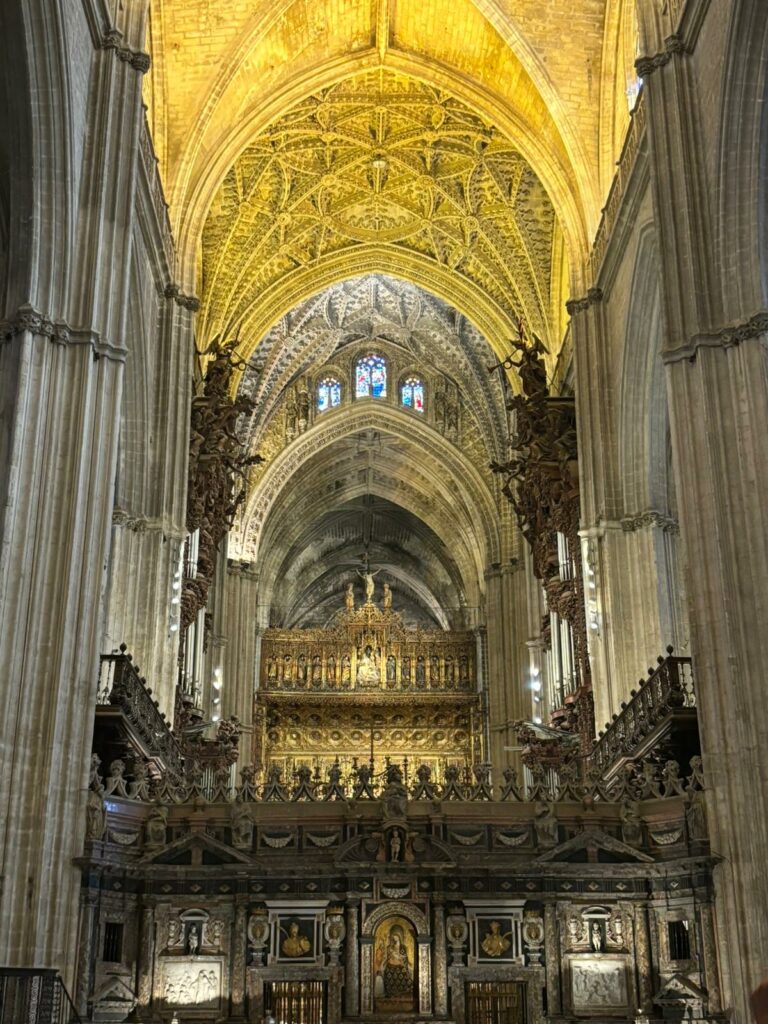
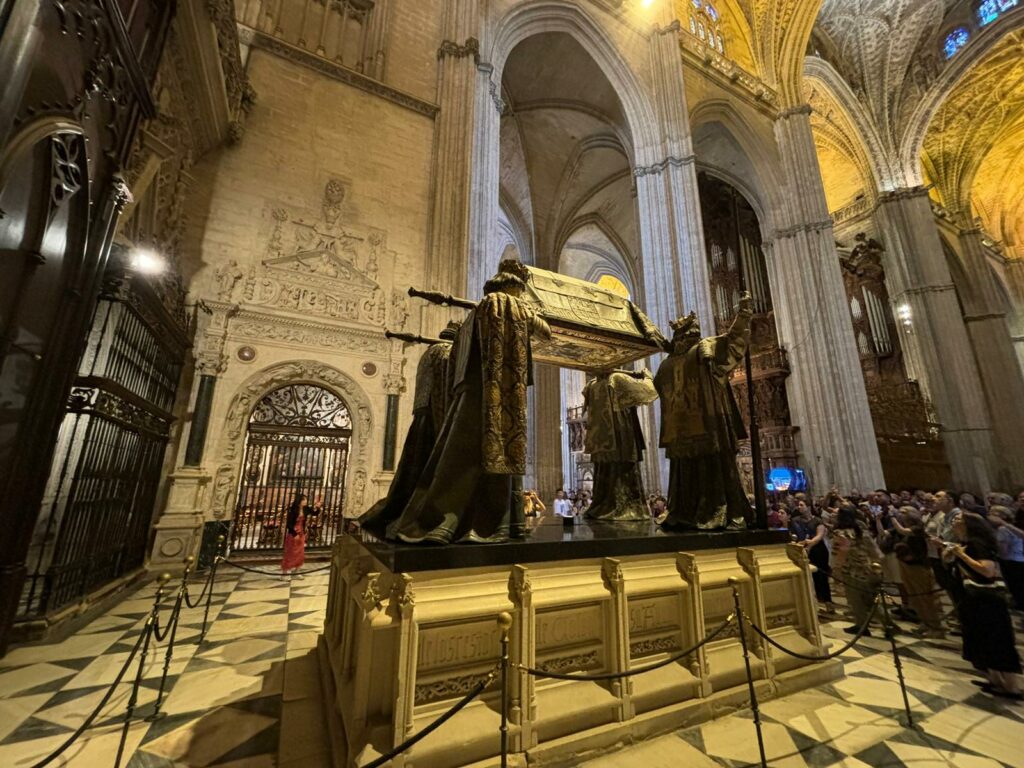
Next, we climbed the Giralda Tower, the cathedral’s bell tower. Originally built as a minaret for the mosque that stood here during the Moorish period, it now offers panoramic views of the city, including the roofs of the Cathedral, the Real Alcázar and the Guadalquivir River. From our point of view, the view from up here is not as spectacular as you might expect!
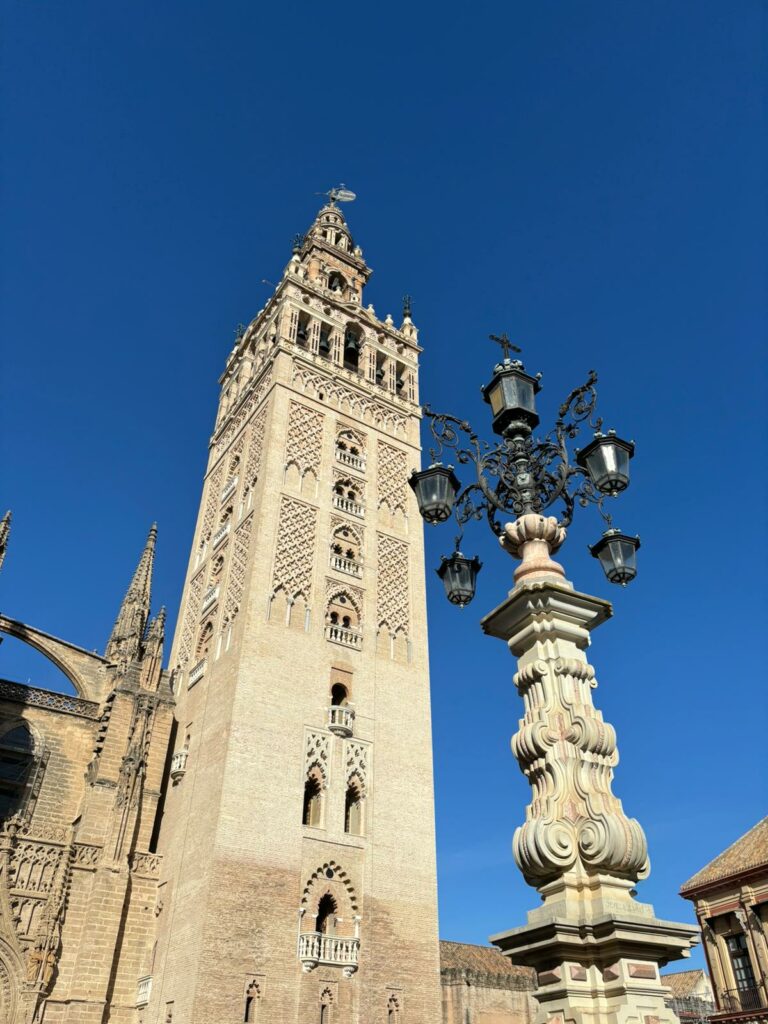
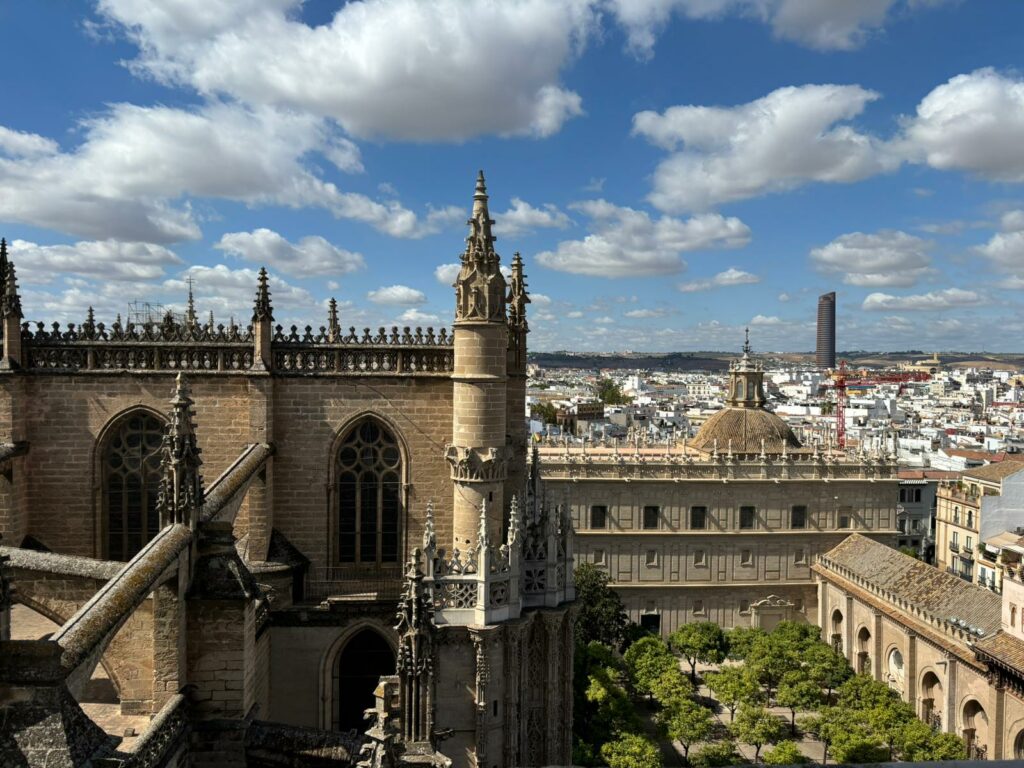
It is advisable to buy tickets online in advance (even a few months) to avoid long queues, especially during the high tourist seasons (spring, winter and autumn). There are several types of ticket to choose from, including combined tickets for the Cathedral, the Giralda and other attractions such as the Real Alcázar.
We strongly recommend that you purchase a combined ticket for both the Cathedral and the Real Alcázar a few months in advance to avoid any problems. You can do it here:
After catching our breath, we strolled through the charming Santa Cruz neighborhood, the old Jewish quarter. Its maze-like streets, whitewashed houses, and hidden plazas transported us back in time. We couldn’t resist stopping for a refreshing glass of sangria in one of the cute little bars tucked away in this area (especially in calle Mateos Gago).
In the evening, we treated ourselves to an authentic flamenco show for free at La Carbonería (Calle Cespedes, 21). This venue offers two shows, at 8.30pm and 9.30pm. Our advice is to arrive around 7pm and take a seat (plus some snacks) as the show is free and the venue fills up very quickly with people. Inside you will be asked not to take any photos or videos to fully enjoy the experience, we ask you to respect these instructions!
Of course, there are many other places where you can enjoy this spectacle for a fee (e.g. in the Triana and El Arenal neighbourhoods).
Have you ever experienced a flamenco show? We’d love to hear about your experience in the comments below!
Day 2 – Royal Alcázar and Plaza de España
In the morning, wake up bright and early and visit the Royal Alcázar, a stunning palace that beautifully blends Moorish and Christian architectural styles. If you are Game of Thrones fans, you’ll, be thrilled to recognize it as one of the filming locations for Dorne!
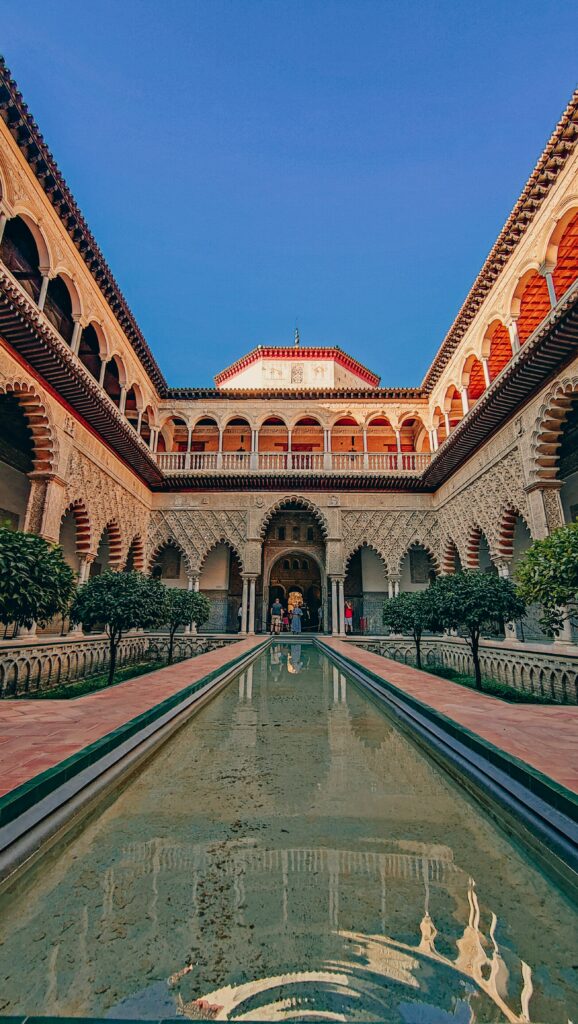
As said, we strongly recommend that you book your tickets several months in advance, as the Alcázar is one of the most popular attractions in Seville and there is a risk that you will not be able to get in, especially in high season. This is exactly what happened to us 🙁
In the afternoon, we made our way to the magnificent Plaza de España. This grand semicircular plaza, built for the Ibero-American Exposition of 1929, took our breath away. The colorful tiles representing different provinces of Spain, the beautiful fountains, and the little boats floating in the canal create a fairytale-like atmosphere.
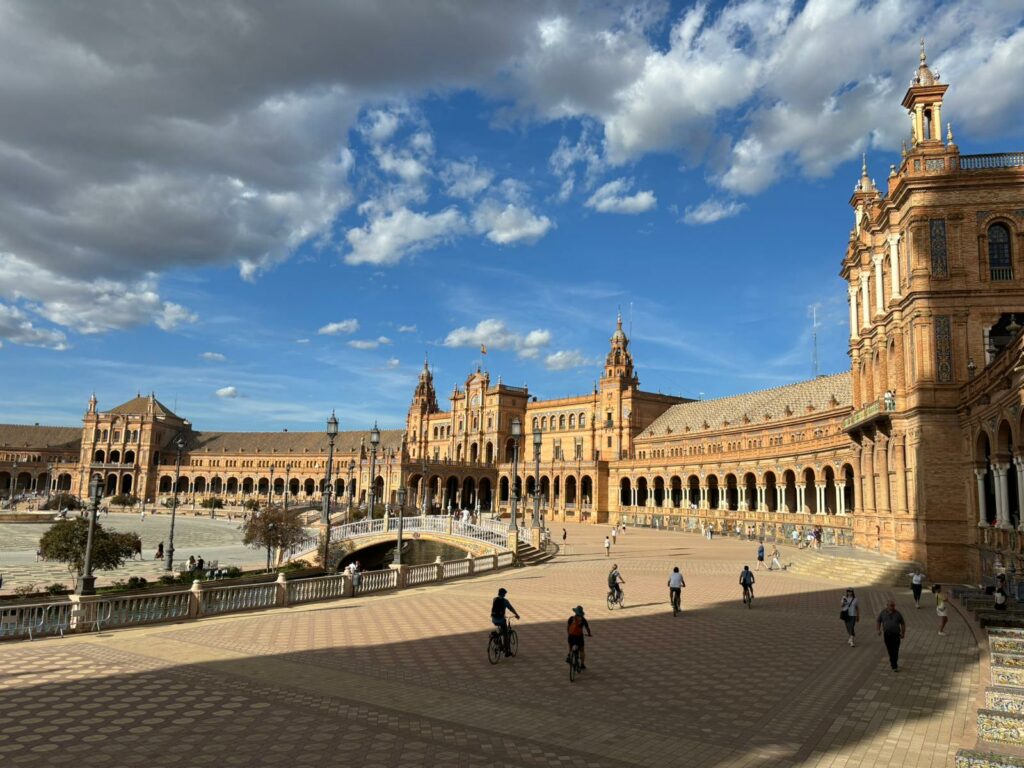
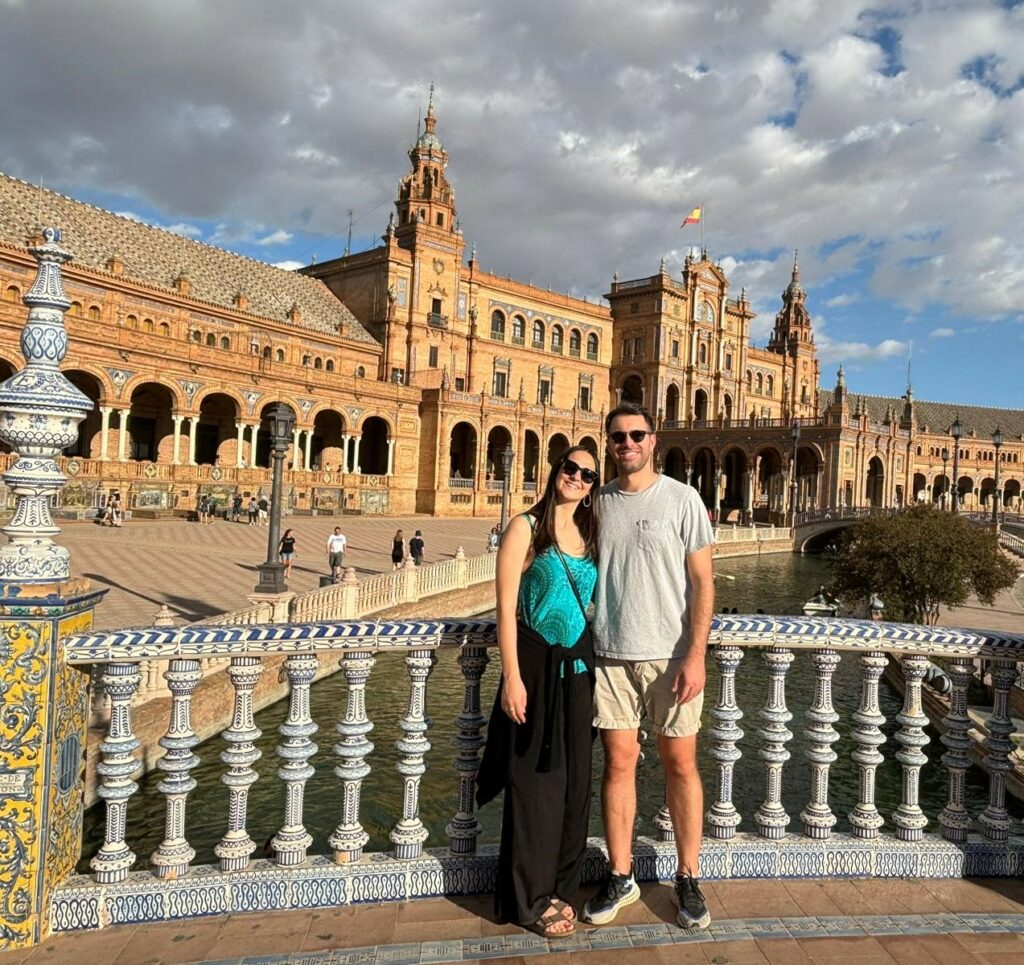
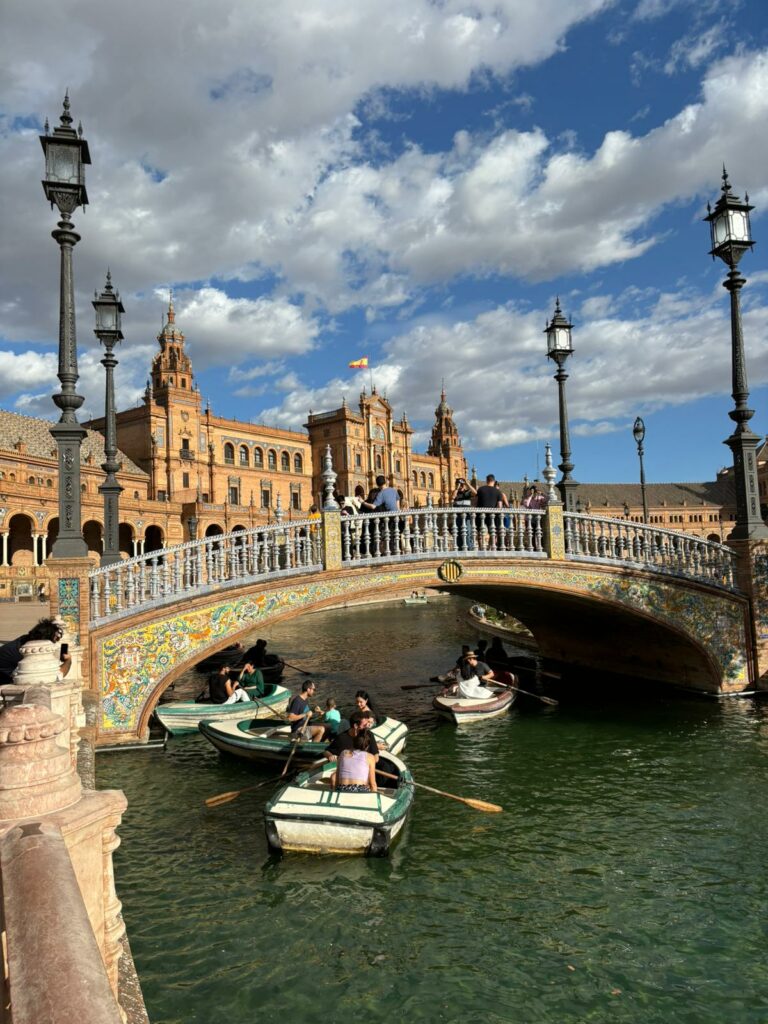
We spent the rest of the afternoon exploring the surrounding María Luisa Park, enjoying the shade of the trees and the company of friendly ducks and peacocks. As the day cooled off, we joined the locals for an evening paseo (stroll) along the Guadalquivir River, watching the sunset paint the sky in breathtaking hues.
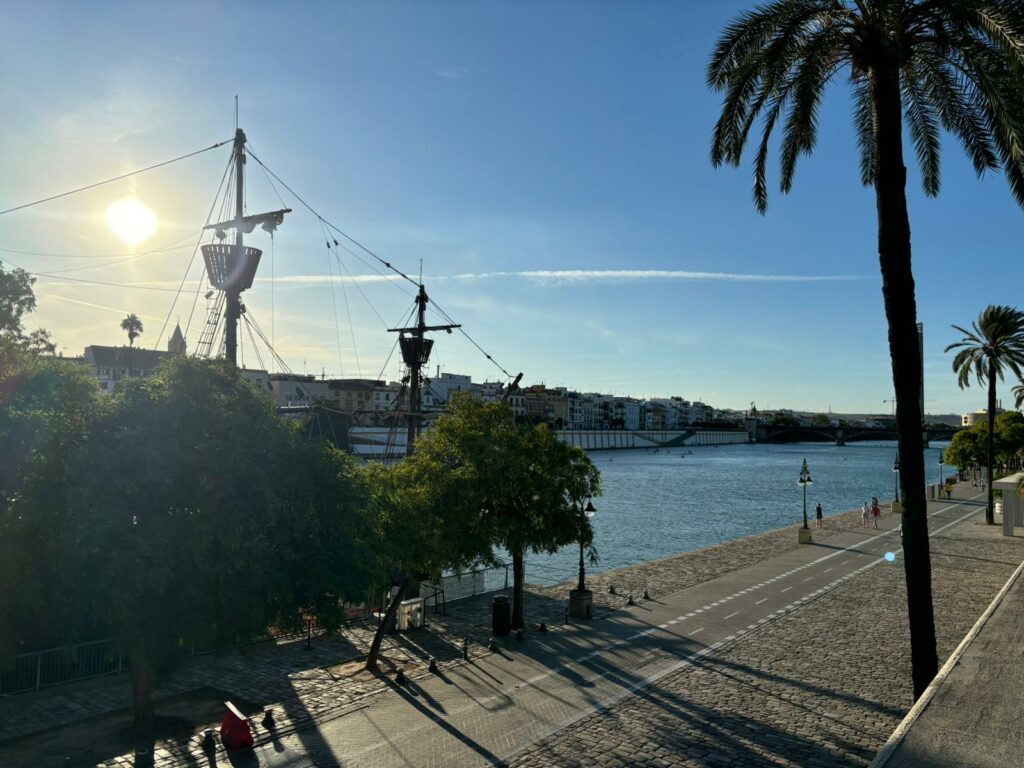
In the evening, we crossed the river to explore the Triana neighborhood. Known as the birthplace of flamenco, Triana has a distinct character all its own. We wandered through the Triana Market, admiring the colorful ceramics this area is famous for.
For dinner, we couldn’t resist trying some tapas at one of the traditional bars along Calle Betis. The patatas bravas and espinacas con garbanzos (spinach with chickpeas) were simply delicious!
Day 3 – Metropol Parasol, Alameda de Hércules and Barrio de la Macarena
For your last day in Sevilla, start with a visit to the Metropol Parasol, known locally as Las Setas (‘the mushrooms’) for its distinctive shape. Located in the Plaza de la Encarnación, it is one of Seville’s most impressive modern structures.
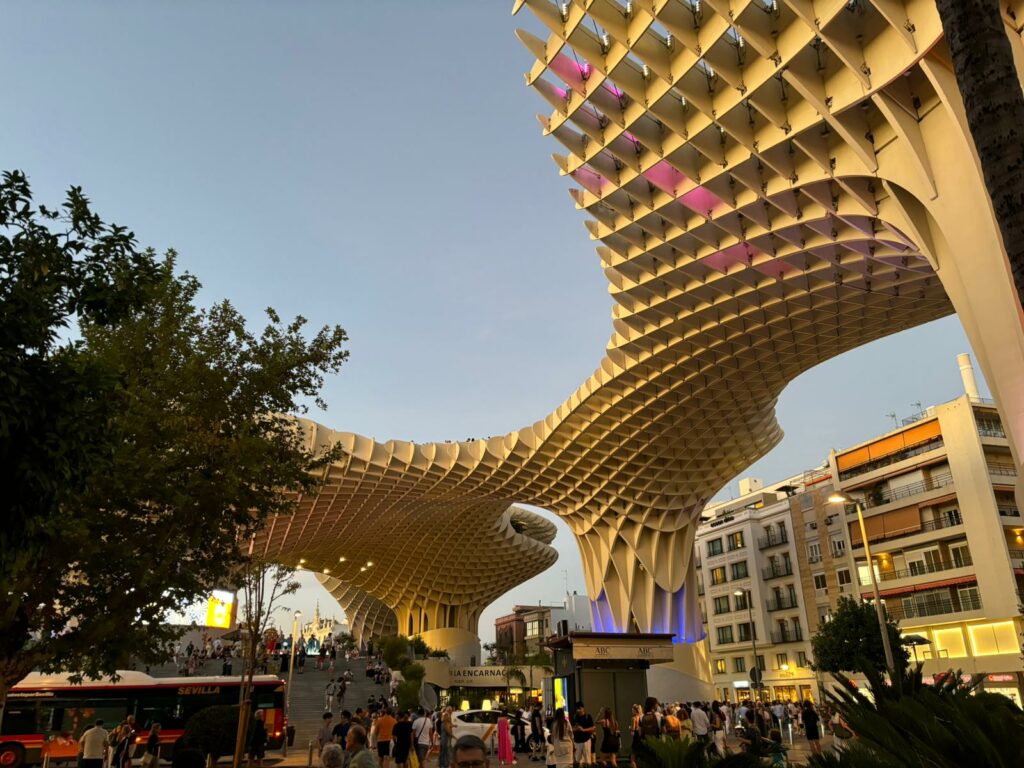
Designed by the German architect Jürgen Mayer, this huge wooden structure was completed in 2011 and has quickly become one of the city’s symbols. If you like, you can climb to the viewing platform at the top of the structure, where you can enjoy a 360° view of Seville. The view includes the main monuments such as the Giralda and the Cathedral, and on a clear day you can even see the surrounding hills. Get your tickets here!
After exploring Las Setas, head to the Alameda de Hércules, one of Seville’s oldest and liveliest squares, which is just a short 10-minute walk away. Built in 1574, the Alameda was a historic meeting place and is now the beating heart of the city’s bohemian and creative life.
The square is characterised by two columns topped by statues of Hercules (the mythical founder of the city) and Julius Caesar. Here you will find a mix of historic establishments, modern cafes and bars, with a lively and alternative atmosphere.
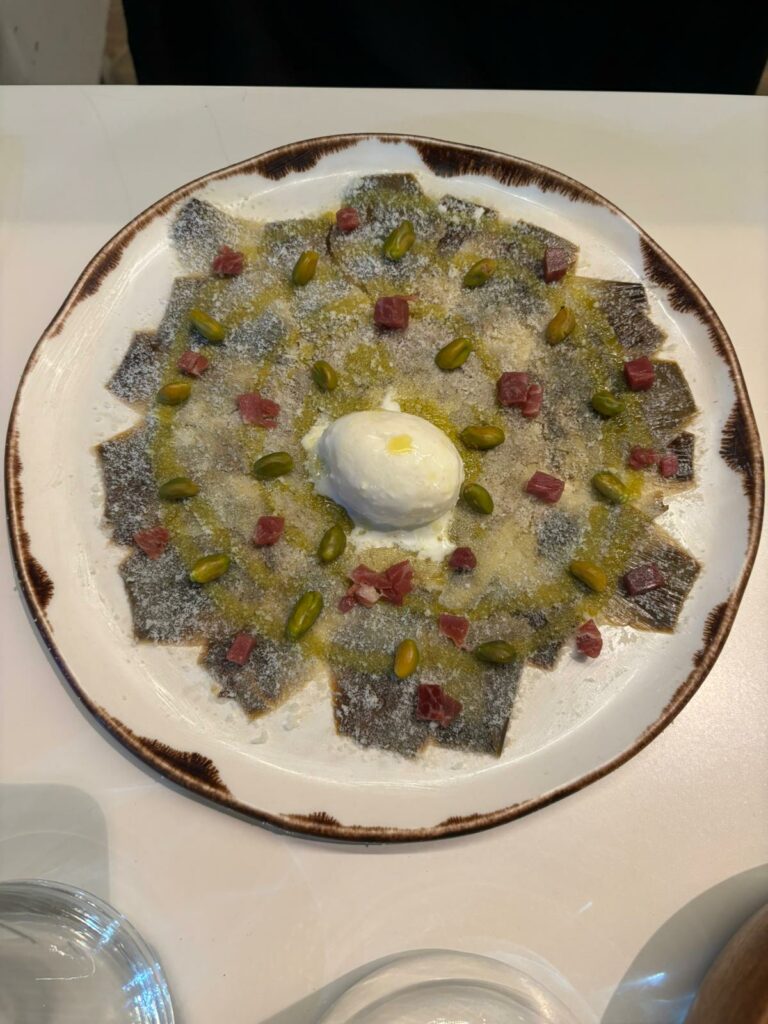
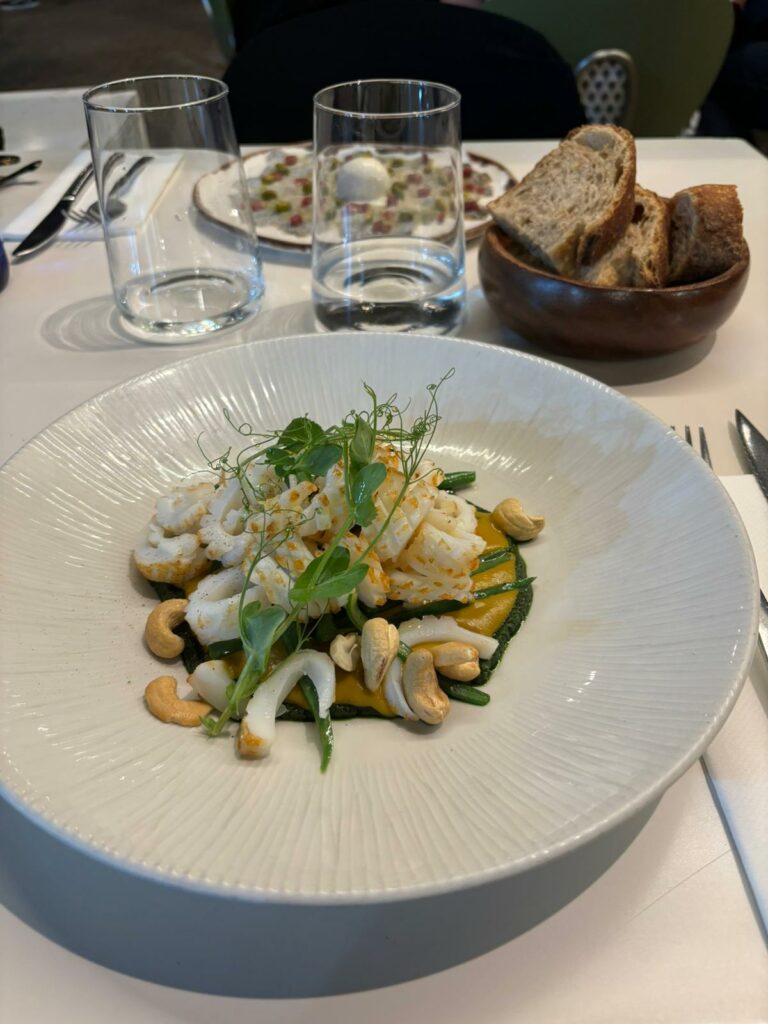
After lunch, head to the Macarena neighbourhood, one of Seville’s most authentic areas, which has retained its traditional character. Here you will find picturesque streets, colourful buildings and an atmosphere that reflects the daily life of Sevillians.
The spiritual heart of the neighbourhood is the Basilica de la Macarena, which houses the famous statue of the Virgen de la Esperanza Macarena, one of the most popular images during Semana Santa in Seville.
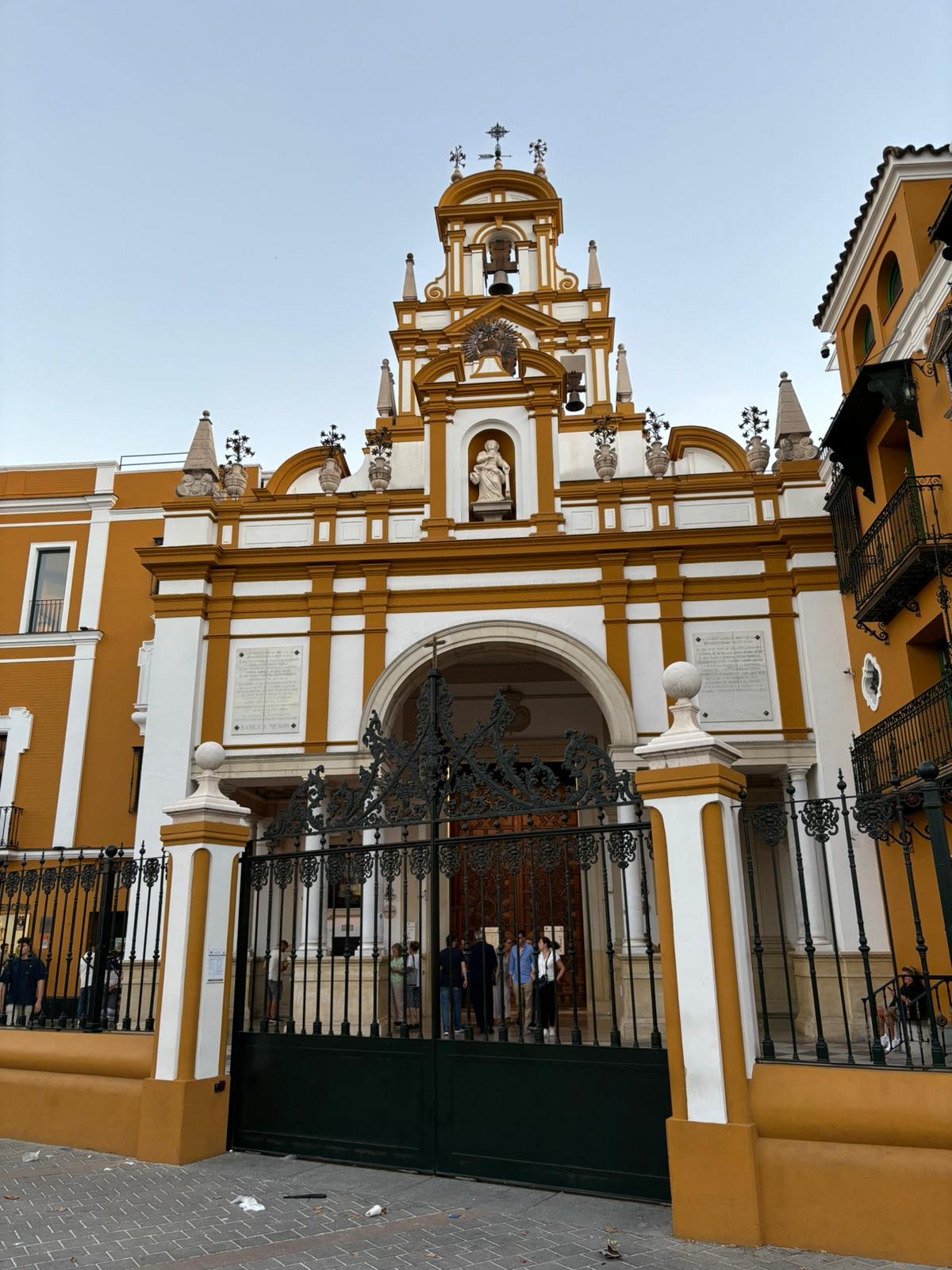
Even if you are not particularly religious, it is worth visiting the basilica to admire the opulence of the interior and the beauty of the statue, considered a masterpiece of religious art. Next to the basilica are the beautiful old walls from the Almohad period (12th century).
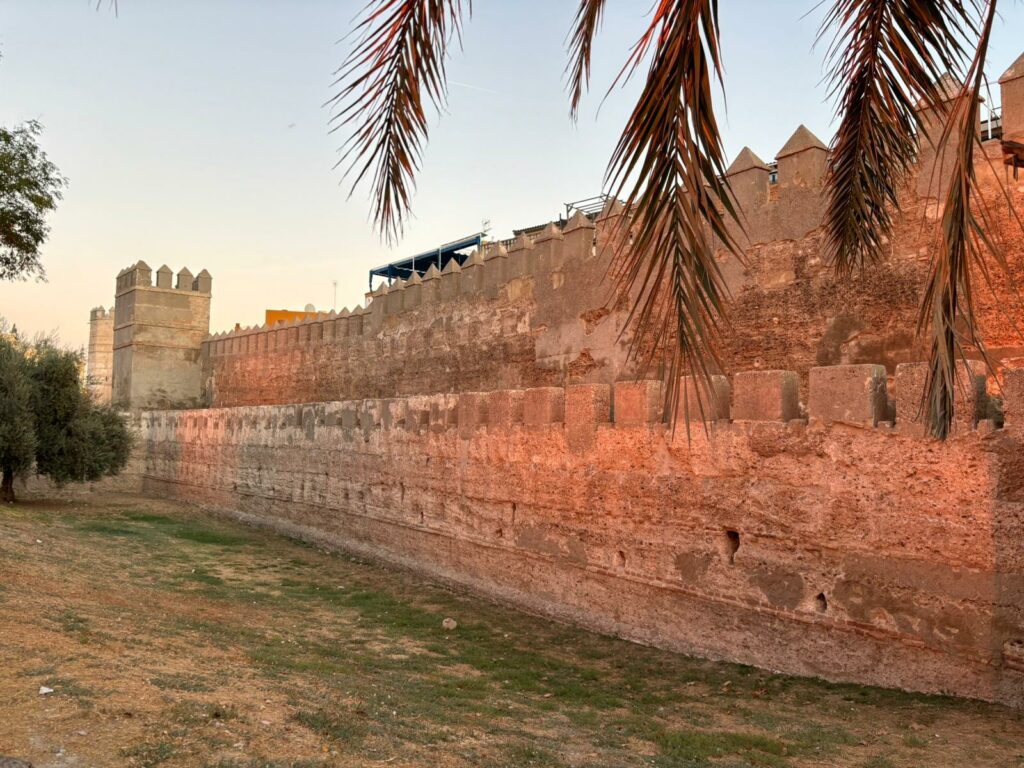
What’s your favorite neighborhood in Seville? Let us know in the comments!
Optional Day 4: Explore Beyond the city
If you’re lucky enough to have an extra day in Seville, here is a fantastic option to expand your Andalusian experience:
Day Trip to Carmona
Just 30 km from Seville lies the charming town of Carmona, perfect for a half-day excursion. Here’s how to make the most of your visit:
- How to Get There: Catch a bus from Seville’s Plaza de Armas station. The journey takes about 40 minutes and costs around €3 each way.
- What to See:
- Alcázar del Rey Don Pedro: A stunning Moorish fortress with panoramic views.
- Roman Necropolis: Well-preserved Roman tombs just outside the town.
- Church of Santa María: A beautiful mix of Gothic, Renaissance, and Baroque styles.
- Where to Eat: Try the local speciality, spinach with chickpeas.
- Budget Tip: Many of Carmona’s attractions offer discounted entry with your Seville Cathedral ticket, so hold onto it!
Remember to check the bus schedule for your return trip to Seville!
Where to stay
We booked our accommodation quite quickly, so we didn’t have much choice, but we selected Vivienda San Agustin because it’s basic but has all the comforts you could need, it’s clean and, most importantly, it’s in a great spot, just a 10-minute walk from the Cathedral.
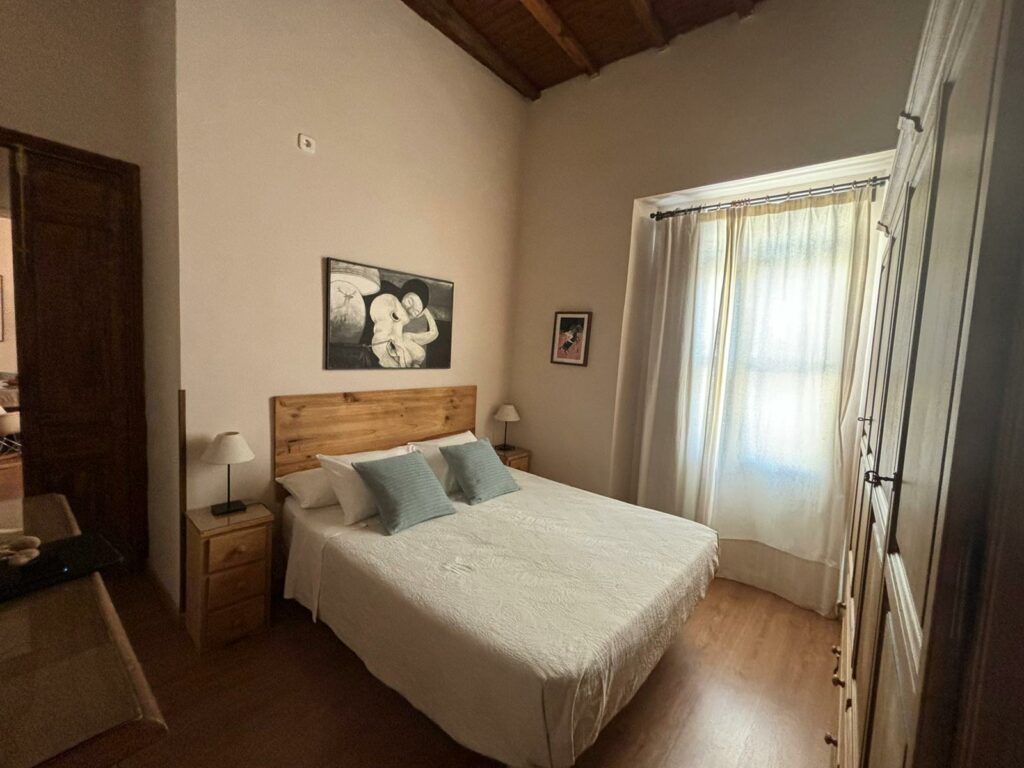
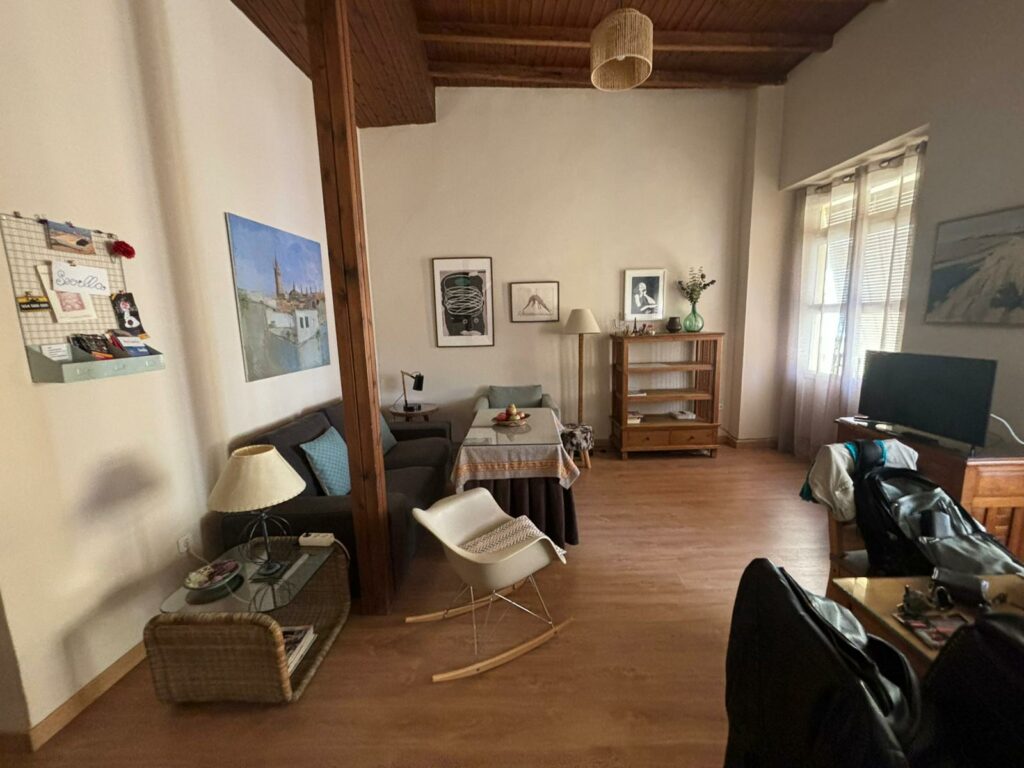
We wholeheartedly recommend this place to anyone who wants to stay in Seville and enjoy its beauty without spending a fortune: Vicente is a really nice person and will give you a warm welcome. However, we would highly recommend booking in advance to have more options available to you.
How to get around in Seville
Seville is a lovely city with just over 700,000 inhabitants. It’s a great place to explore thanks to its compact city center and pedestrian-friendly streets.
You’ll love exploring the city on foot! Walk along Avenida de la Constitución, one of the main streets, from top to bottom and cross Plaza Nueva, the pulsating center of the city.
Of course, if you’re keen to explore the surrounding area, you can rely on public transport, which is really efficient and quite cheap. We mainly used the tram and bus system, which was convenient and easy to navigate.
If you’re looking to rent a car, then look no further than DiscoverCars.com! You’ll find here the perfect rental solution.
Where to eat in Seville
The place that really won us over is Cerveceria La Giralda, located in the heart of Seville. This place specializes in traditional Sevillian tapas. It is well worth the wait to get in, especially in high season. The interior of the restaurant is warm and inviting, with typical Andalusian decor and walls lined with wine bottles. It is open all year round for lunch or dinner (from midday to midnight), but we recommend booking in advance during the high season!
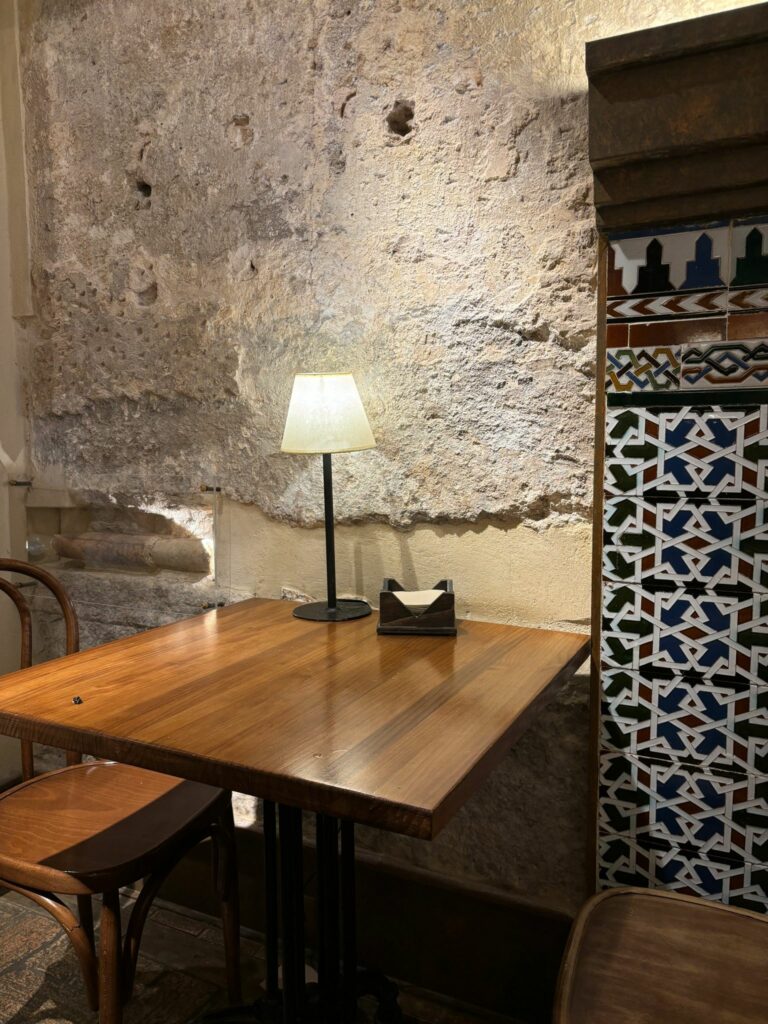
The cost of eating out is generally quite reasonable, with tapas ranging from €2-€5 per plate. A full meal with drinks usually costs around €15-€20 per person.
Travel Tips from KeepMoosing
Traveling is exciting, but protecting your data should always be a priority. That’s why we trust Surfshark, a leading cybersecurity company offering tools like VPN, Antivirus, and Alert (a data breach detection system). We highly recommend Surfshark for its versatile VPN, which is perfect for keeping your digital life secure while on the go.
With Surfshark VPN, you can safely use public Wi-Fi networks without worrying about fraud or hacking, ensuring your sensitive information, such as passwords and banking details, stays protected. It also allows you to bypass geographical restrictions, so you can stream your favorite TV shows or access region-blocked websites from anywhere.
We also suggest using Surfshark VPN while planning your trip. It helps you avoid price discrimination by changing your virtual location, often leading to better deals on flights and hotels.
You can buy your subscription here!
Conclusions
Seville is a city that captures your heart with its beauty, history, and vibrant culture. If you’re prepared to walk a lot and brave the hot Andalusian sun, you will be fascinated by amazing sights that seem to have come straight out of a fairytale.
Here you can immerse yourself in the rich tapestry of Spanish history, with the scent of orange blossoms in the air, and breathe in an atmosphere that will stay with you forever! Leave a comment in the box below indicating what you liked most about this article and don’t hesitate to ask any questions. We’re here to help!
What was your favorite part of our itinerary? We really hope this guide about what to see in Seville in 3 days will help you plan your trip! We can’t wait to hear your thoughts in the comments!
***Some of the links on our blog are affiliate links. By purchasing through these links, you help us support our work at no extra cost to you.***

